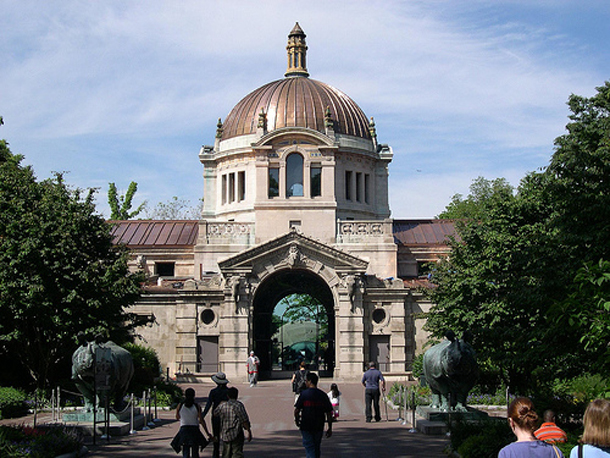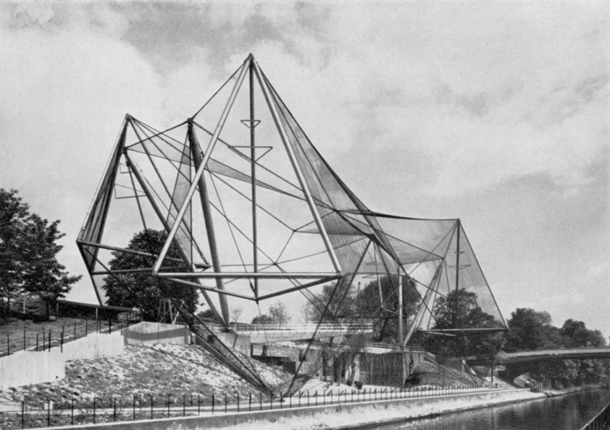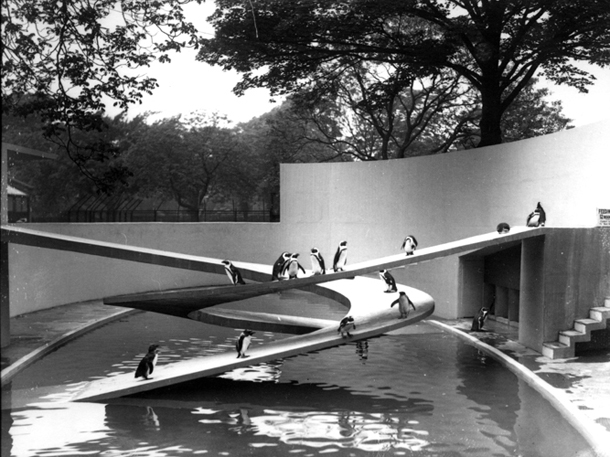Below is an excerpt of Beastly Designs; A short architectural survey of zoo architecture and design previously published on UnCubed Magazine. The full article can be found on at UnCubeMagazine.com
Beastly Designs; A short architectural survey of zoo architecture and design
By Ned Dodington
Zoos are strange, wondrous and beguiling institutions. They are instructive and detrimental, compassionate and cruel, culturally specific but universally appealing and architecturally unlike any other construction. Ned Dodington, founder of expandedenvironment.org and a specialist in design for animals and post-human environments, takes us on a selected tour of zoo design and looks at changing notions of the captive audience.
Zoos are primarily dedicated to the habits and lives of non-human animals, yet the emotions they elicited from us can range from wonder and joy to compassion and sorrow. Beyond t he lions, and tigers and bears, it’s the zoos’ facility to reflect our own humanity that makes them such wondrous places. Many of the lessons learned throughout history in this respect are written on the wall, so to speak, in the landscape, architecture and planning and presentation of zoos – all of which combine to illustrate the human intentions behind the organisation of other animals.
Education, Conservation and Exoticism: The Modern Zoo
Collecting exotic animals for exhibition is an ancient practice – evidence of it has been found as early as 3,500 BC in the ancient Egyptian capital of Hierakonplis – and any history of the zoo would be incomplete without mentioning the story of Noah’s Ark, But the modern zoo traces its first pre-modern incarnations to the Aristocratic menageries of the 15th, 16th and 17th centuries in Europe.
But by the 19th and early 20th centuries the menageries gave way with the arrival of the enlightenment period and changing attitudes about animal life to the first modern zoos and zoological conservatories. Among the earliest zoos and zoological parks of this period are The Berlin Zoological Garden in Berlin’s Tiergarten by Martin Lichtenstein and Peter Joseph Lennè(1844) , The Bronx Zoological Park by George Lewis Heings and Christopher Grant LaFarge (1899), and Whipsnade Park (1928) outside of London.

Bronx Zoo Elephant House
At the Bronx Zoo, the American architects Heins and LaFarge created a stately entrance with dozens of large bronze animals to welcome the visitor and animal houses were both more generous and more open. The Tierpark in Berlin is said to be the first zoo to separate animals from humans with water filled moats instead of fences, and producing a greater sense of exposure to the animals; and Whipsnade Zoo, founded for the conservation of animals and their habitats is a large wildlife reserve where many of the animals are allowed to roam relatively freely in a larger enclosure.
But, despite their stately appearances, and humane improvements these zoos were still primarily designed to exhibit the animals as curiosities and the architecture reflects the status of the state, not necessarily the character of the animals.
Berthold Lubetkin’s pavilion for Penguins at the London Zoo is one of the most quoted pieces of architecture built by humans for animals. A modernist slide for the penguins, usually photographed waddling down the winding slope, Lubetkin’s creation is a naive marriage between the aesthetics of modernism and a romanticised version of an animal habitat. The stark white slide mimics the whiteness of spiralling icy slope and both humans and penguins can participate in the enjoyment of its naked formalism. The reality is however not so successful. The structure was difficult to construct and was rarely used as a slide becoming more of an architectural novelty than enjoyable zoo structure.

Snowden Aviary, London Zoo.
Lord Snowdon, Cedric Price and Frank Newby’s aviary at the same zoo, built roughly 30 years later, also attempts to be aesthetically pleasing to humans and acceptable to birds. However here, both humans and birds can for a time occupy the same space. Unfortunately, like the penguin slide, the Aviary too was difficult to construct and a challenge to maintain.
Further reading about the evolution in zoo-thinking and design up the present day can be found at UnCubeMagazine.com







